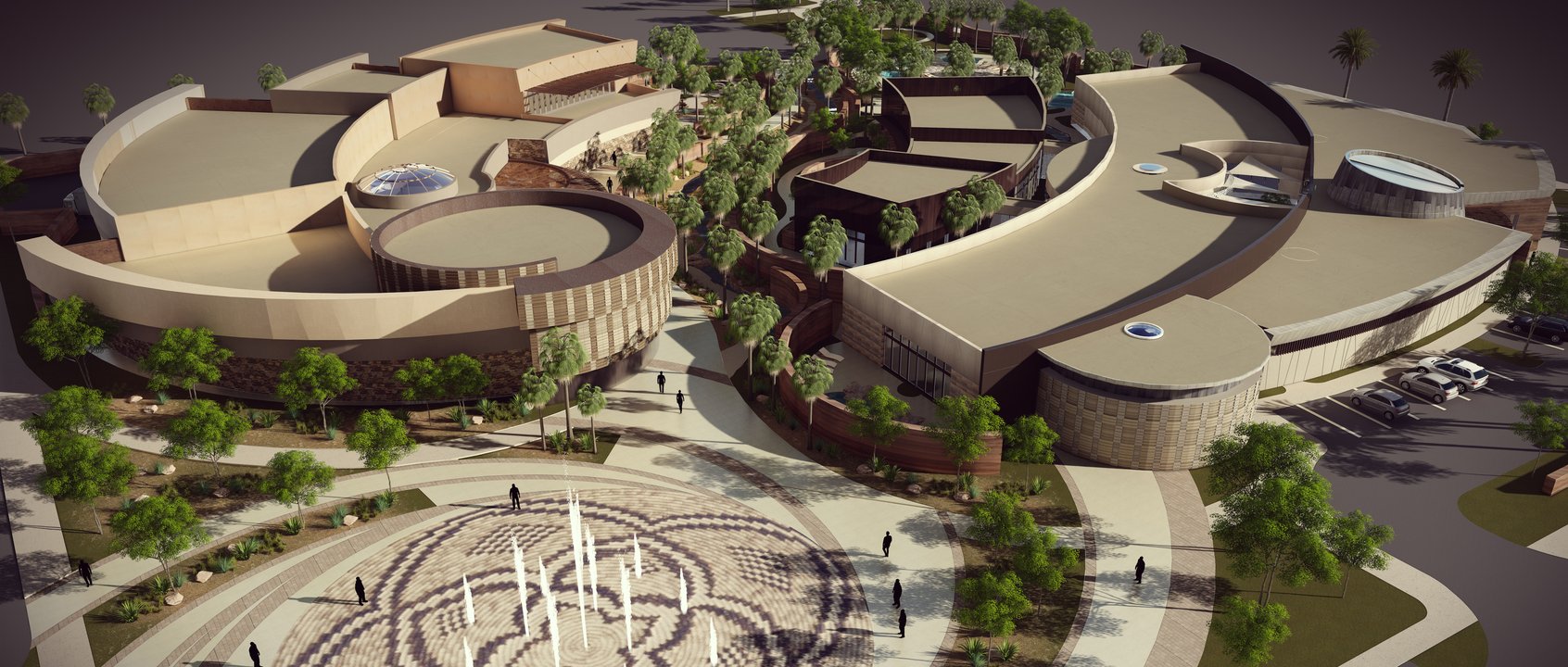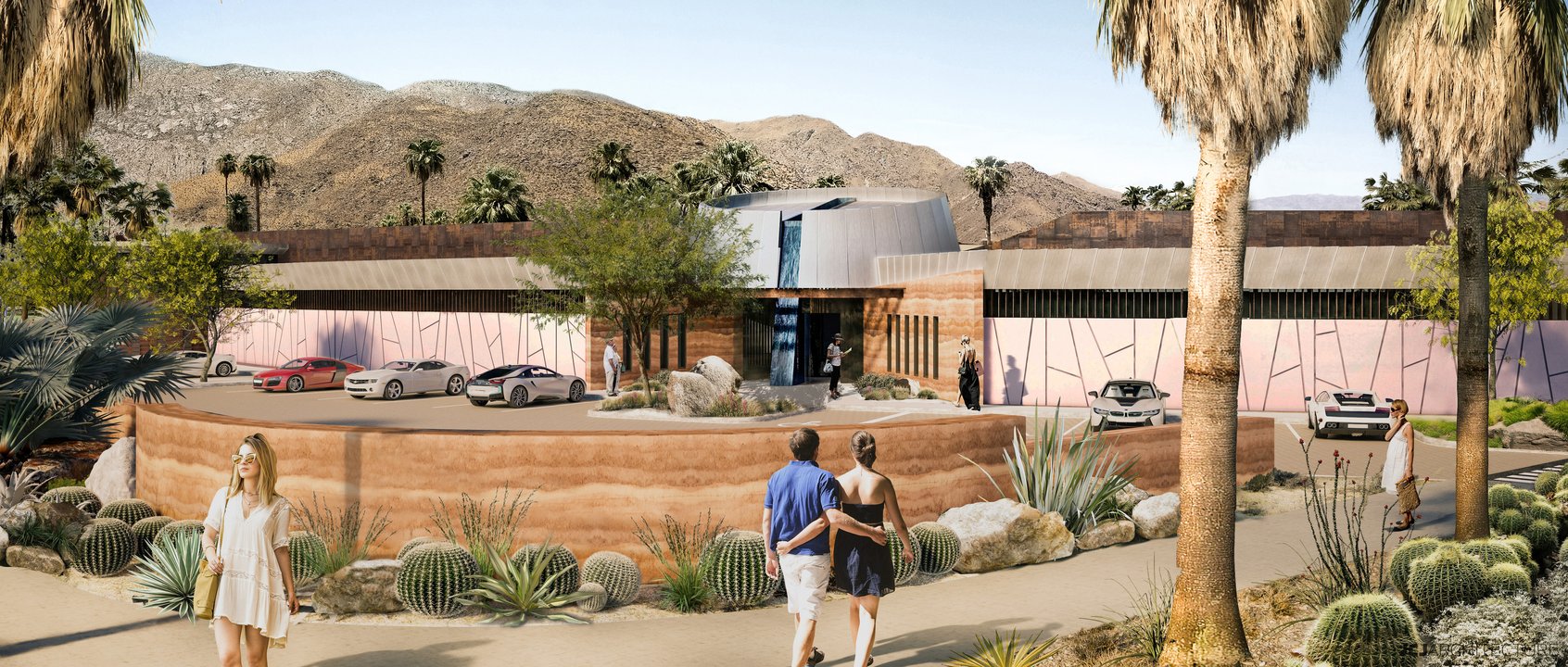
JCJ Architecture has assisted the Agua Caliente Band of Cahuilla Indians in the development of a far reaching and comprehensive Master Plan for twenty-two acres in downtown Palm Springs, California. Anticipated to be completed in 2020, the first phase includes a 6.8 acres Cultural Center. In construction, the project will share and celebrate the history and culture of the Agua Caliente community via three components: the Agua Caliente Cultural Museum; the new Spa and Bathhouse, which draws upon the rich tradition of experiencing healing mineral water; and the Oasis Trail which will reflect the distinctive character and beauty of the Indian Canyons, the ancestral home of the Agua Caliente.

An incredible opportunity to share and celebrate our history, culture and traditions with this community and visitors from around the world.”
– Tribal Chairman Jeff L. Grubbe
The design includes numerous outdoor activity spaces, including a Gathering Plaza adjacent to the Agua Caliente Hot Mineral Spring, originally known as Sec Hé (the sound of boiling water), which serves as the focal point for the new development. Inspiration for the design of the museum includes Agua Caliente iconography such as meaningful patterns in basket weaving and olla pottery as well as natural elements found in the nearby landscape including dramatic rock formations of Andreas Canyon. The Spa and Bathhouse includes approximately 40,000 square feet for celebration of the ancient healing waters of the Agua Caliente Hot Mineral Spring. The water from the Sec Hé is estimated to be upwards of 12,000 years old and is truly unique as it contains a mineral make-up that has not been found anywhere else in the world. The Oasis Trail will meander between the Museum and Spa, and will include interpretive learning areas, waterfalls that recreate some of the significant elements found in the nearby Indian Canyons, and a flowing stream with indigenous plant material that extends the learning experiences of the adjacent Museum into the landscape.






